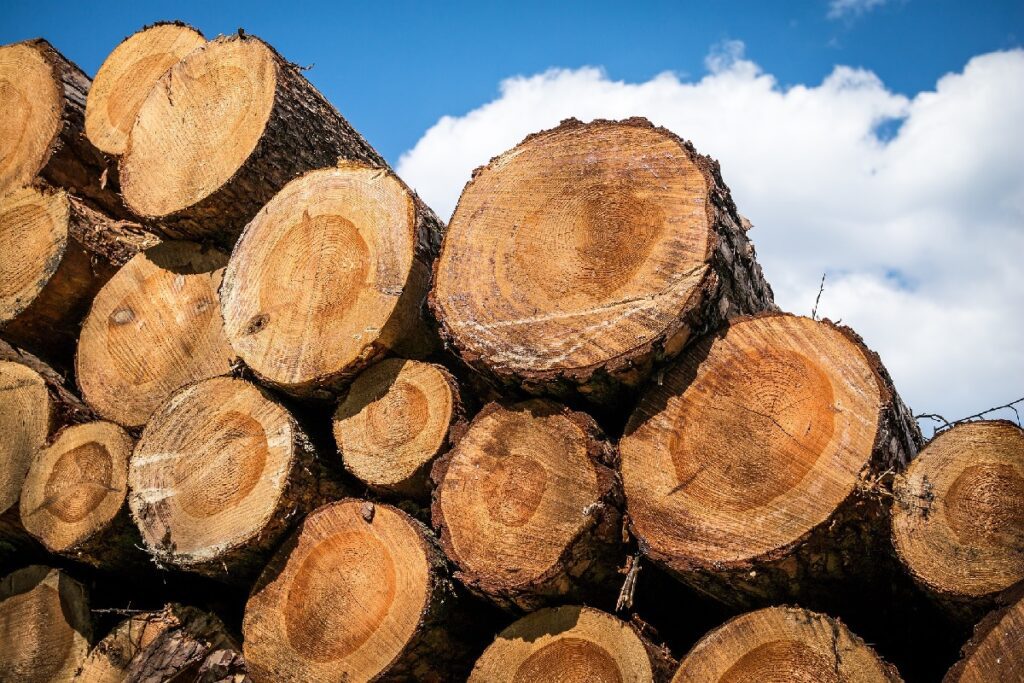
Bowl turning is an art form that requires a deep understanding of wood types and their characteristics. Choosing the right wood for your project can make the difference between a successful bowl and a failed one. In this article, I will discuss the factors to consider when selecting the best wood for turning bowls, focusing on the best wood for traditional bowl turning.
Greenwood: Understanding the Basics
Regarding traditional bowl turning, greenwood refers to any tree that has recently been felled, which means the wood hasn’t dried out. This presents some challenges for turners since wooden logs don’t dry out evenly, which can cause checks and cracks. Therefore, choosing wood that is not too green or dry is essential.
Sourcing Greenwood
Finding a reliable source of greenwood can be challenging. One option is to contact local tree surgeons or check out local sawmills and wood suppliers for green wood. They may have a good stock of green wood, which can be used for various purposes. It is also advisable to purchase wood sourced from sustainably managed forests.
Storing Greenwood
Once you have found greenwood, it is important to store it properly to slow down the drying process. Store the log in a cool, dry place away from direct sunlight. The log should be raised off the ground to prevent it from absorbing moisture from the soil. Don’t cut the logs smaller than you have to. Seal the cut ends of the logs with PVA glue or similar, and cover the wood with a tarp to protect it from wind and sunlight. It is important to note that greenwood may contain woodworm, so storing untreated wood away from buildings is best.

Species Selection – Best Wood for Traditional Bowl Turning
The first step in selecting the best wood for traditional bowl turning is to choose the right tree species. Different species have different properties that affect their suitability for traditional bowl turning. Some species, such as English oak and American black walnut, have a strong, straight grain ideal for traditional bowl turning. In contrast, others, such as beech and maple, have a softer, more flexible grain that makes them better suited for other types of woodworking.
Wood Selection
Once you have identified the best wood species for your traditional bowl-turning project, the next step is to select the right piece of wood. Look for healthy wood that is free from signs of disease or rot. The wood should have a straight grain and minimal knots. Knots in the wood can make it difficult to work with and affect the overall appearance of your finished project. Before working with it, ensure the wood is cut to the appropriate size and shape for your project.
Size and Shape
The size and shape of the log are also important considerations for traditional bowl turning. Look for a log that is straight and free from knots or branches. The diameter of the log should be at least the size of the object you want to create. For example, if you want to make a traditional bowl, look for a log with a diameter of at least 8-10 inches. The length of the log should also be considered. A longer log can be cut into multiple pieces, while a shorter one may limit the object size you can create.
Greenwood Moisture Content
The moisture content of the wood is critical when selecting the best wood for traditional bowl turning. Wood that is too dry or too wet can cause problems during the working process. When selecting the wood, you can often feel the moisture in the wood when it’s first split, giving you a good idea of its moisture content. Some wood can be too green. This can cause problems getting a smooth finish on your bowl. If you notice that you are getting a fluffy finish or see a halo of moisture when spinning the blank on your lathe, the wood is probably too green. Letting the wood mature a little and ensuring your tools are really sharp will improve the finish.
It’s best to avoid wood with any signs of rot, as this can affect its structural integrity and make it difficult to work with. Some wood may “shatter” once it starts to rot, which makes it very difficult to finish the bowl successfully. Cherry seems to be particularly vulnerable to this type of rot.
Conclusion
Selecting the best wood for traditional bowl turning can be daunting, but with a little knowledge and experience, you can confidently choose the right wood for your project. Remember to consider the species, wood selection, size and shape, and moisture content of the wood. English oak and American black walnut are two of the best wood species for traditional bowl turning, but beech and maple can also be good options for other types of woodworking. By following these guidelines, you can create beautiful and functional bowls that will last for generations.
